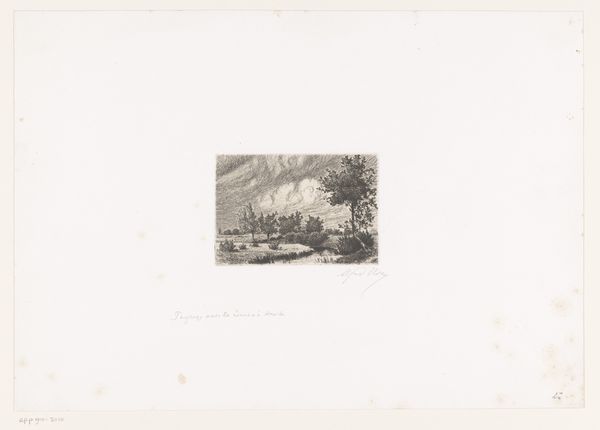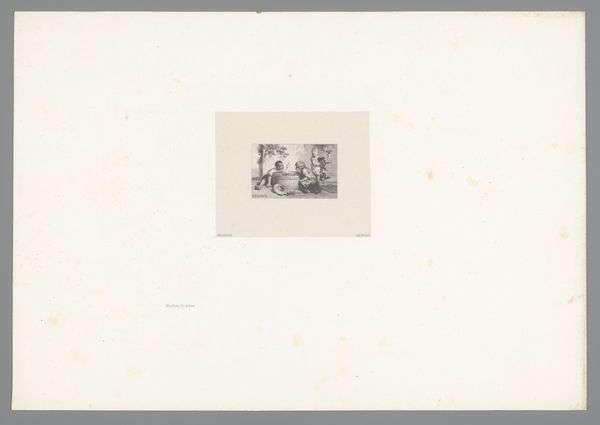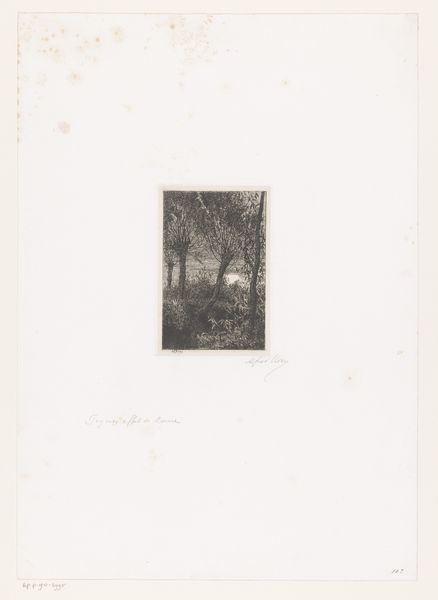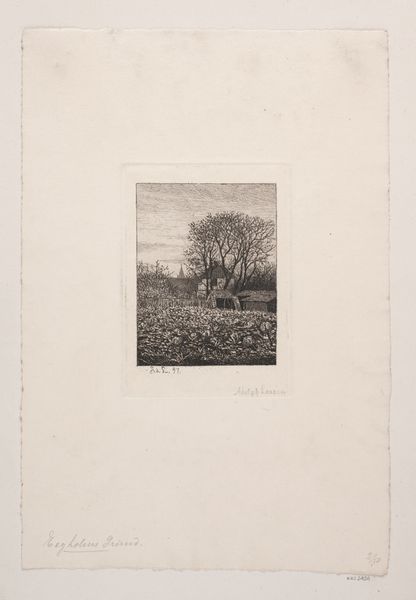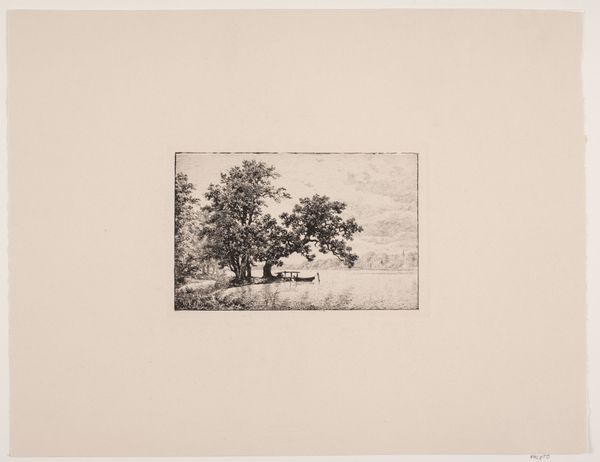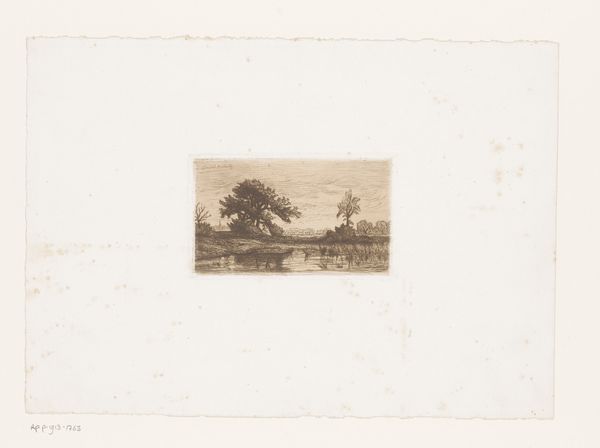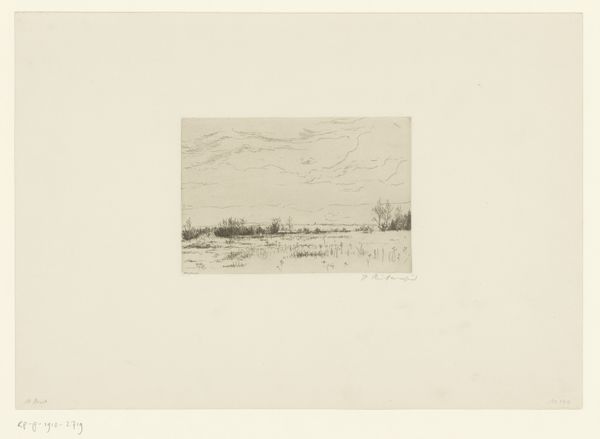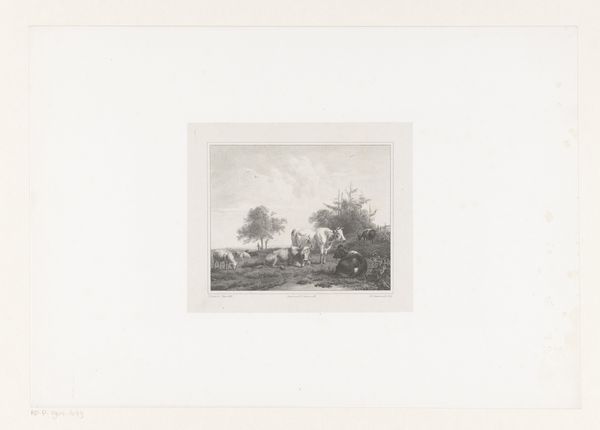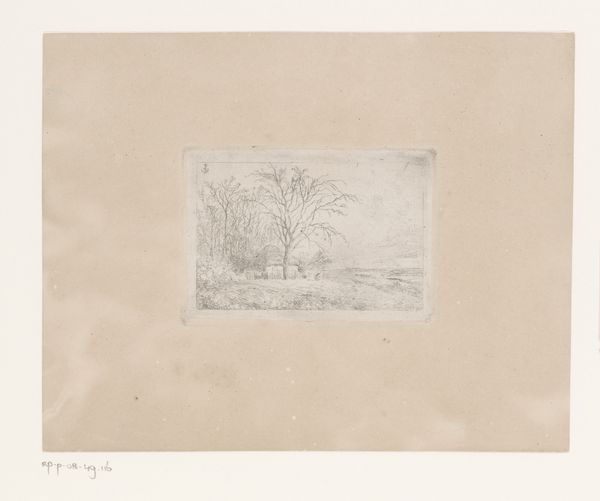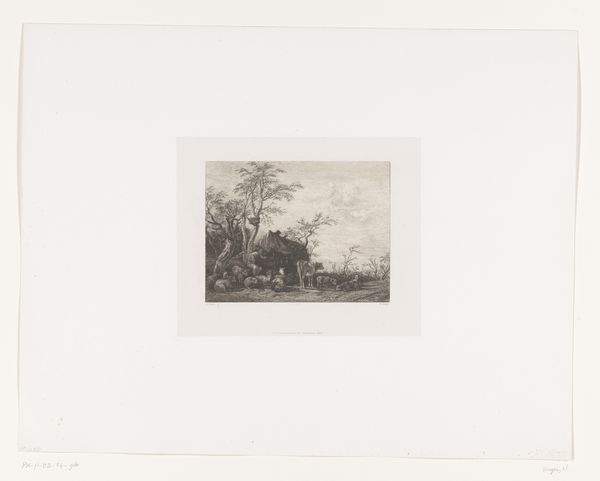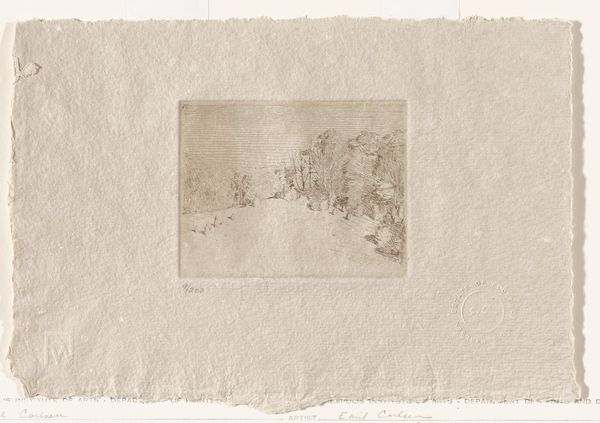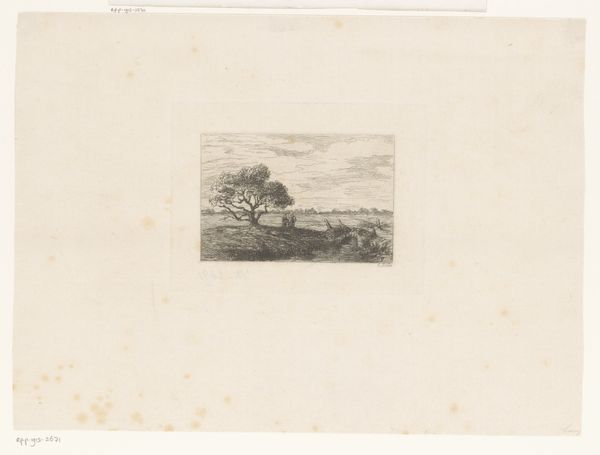
#
photo of handprinted image
#
aged paper
#
lake
#
light colour palette
#
pale palette
#
pale colours
#
ink paper printed
#
parchment
#
light coloured
#
white palette
#
soft colour palette
Dimensions: height 99 mm, width 119 mm
Copyright: Rijks Museum: Open Domain
Curator: "Landschap met vier wilgen aan het water" or "Landscape with Four Willows by the Water," as it would translate, is an intriguing little print. We believe it was created sometime between 1860 and 1910. Editor: It’s quite subtle, isn’t it? Almost dreamlike in its delicacy. The paper has aged, acquiring a patina that lends an undeniable warmth to its cool tones. It gives you this instant sense of calm. Curator: Yes, there's something quite tranquil about it. This piece resides here at the Rijksmuseum. Its understated presence offers a quiet contrast to some of the grander narratives of the period. It speaks to me of the growing interest in more domestic landscapes that arose amidst rapid urbanization. Editor: Looking closely, one appreciates the meticulous handwork involved. The variations in line weight create depth and texture that are quite engaging, especially given the relatively small scale. I'm fascinated by the labour, by the hours the artist put into creating these delicate strokes. What sort of societal views on the role of landscape influenced the subject choice and print-making? Curator: I think it shows how art institutions started including pieces that depicted more pastoral elements in art at the time. Artists turned to landscape imagery partly as a reaction to social unease brought on by modern industrial progress. Prints like this served an audience that may have longed for more bucolic scenery amidst growing urban centres. It brings in the notion of the commodification of scenery, but accessible and available to the popular eye and collector's desire. Editor: Exactly, which begs the question of distribution: Was it sold as individual prints, part of a larger collection? Did the artist view the production of prints as 'lesser' work or a mode of independent circulation? Curator: These are great questions. Understanding such elements allows us to better interpret the role pieces like this played for both the artist and the public at a pivotal juncture in art. Thank you. Editor: Thank you, for lending structure to my initial observations and allowing for that space of analysis.
Comments
No comments
Be the first to comment and join the conversation on the ultimate creative platform.

